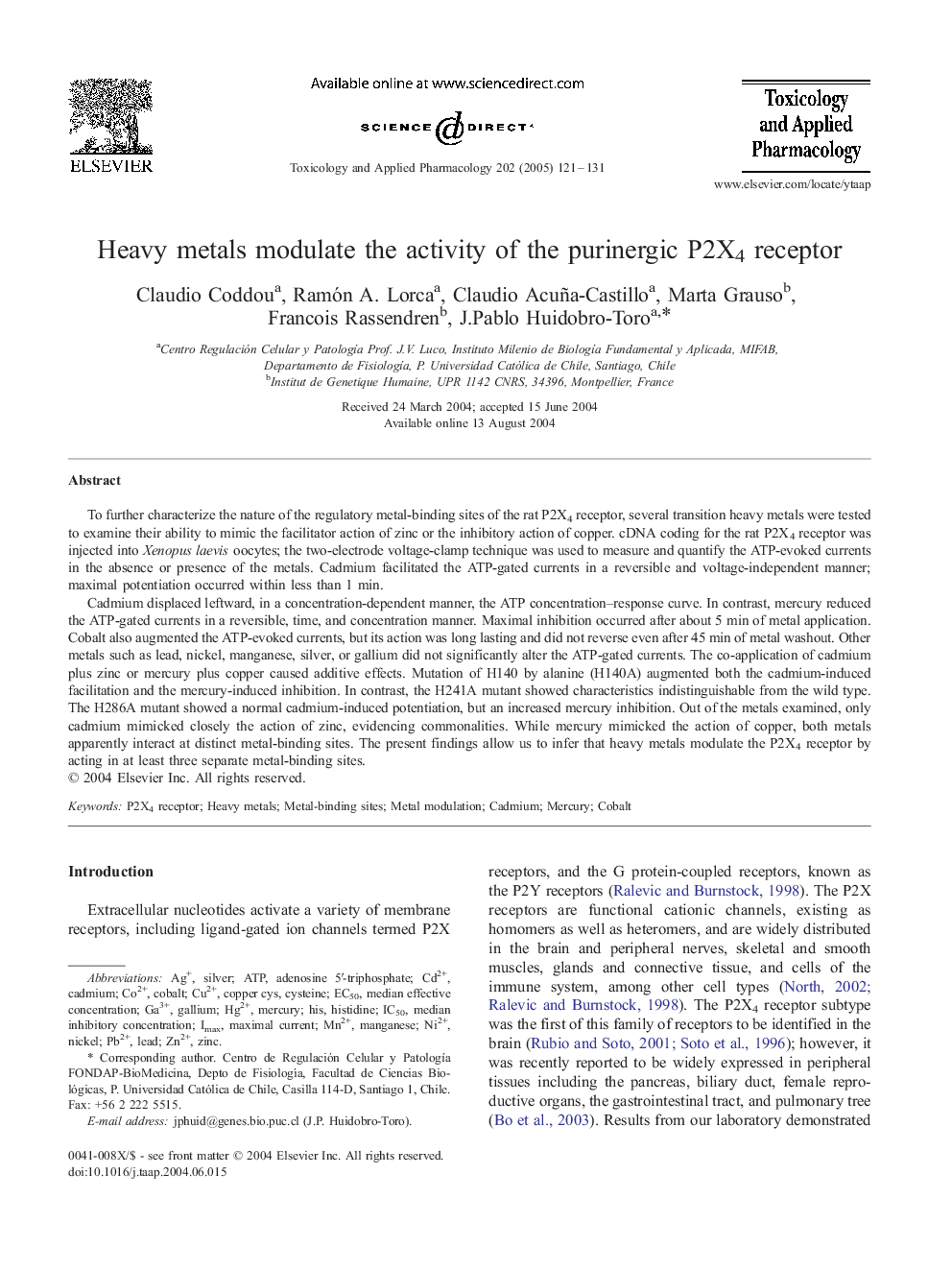| Article ID | Journal | Published Year | Pages | File Type |
|---|---|---|---|---|
| 9017970 | Toxicology and Applied Pharmacology | 2005 | 11 Pages |
Abstract
Cadmium displaced leftward, in a concentration-dependent manner, the ATP concentration-response curve. In contrast, mercury reduced the ATP-gated currents in a reversible, time, and concentration manner. Maximal inhibition occurred after about 5 min of metal application. Cobalt also augmented the ATP-evoked currents, but its action was long lasting and did not reverse even after 45 min of metal washout. Other metals such as lead, nickel, manganese, silver, or gallium did not significantly alter the ATP-gated currents. The co-application of cadmium plus zinc or mercury plus copper caused additive effects. Mutation of H140 by alanine (H140A) augmented both the cadmium-induced facilitation and the mercury-induced inhibition. In contrast, the H241A mutant showed characteristics indistinguishable from the wild type. The H286A mutant showed a normal cadmium-induced potentiation, but an increased mercury inhibition. Out of the metals examined, only cadmium mimicked closely the action of zinc, evidencing commonalities. While mercury mimicked the action of copper, both metals apparently interact at distinct metal-binding sites. The present findings allow us to infer that heavy metals modulate the P2X4 receptor by acting in at least three separate metal-binding sites.
Keywords
Related Topics
Life Sciences
Environmental Science
Health, Toxicology and Mutagenesis
Authors
Claudio Coddou, Ramón A. Lorca, Claudio Acuña-Castillo, Marta Grauso, Francois Rassendren, J.Pablo Huidobro-Toro,
